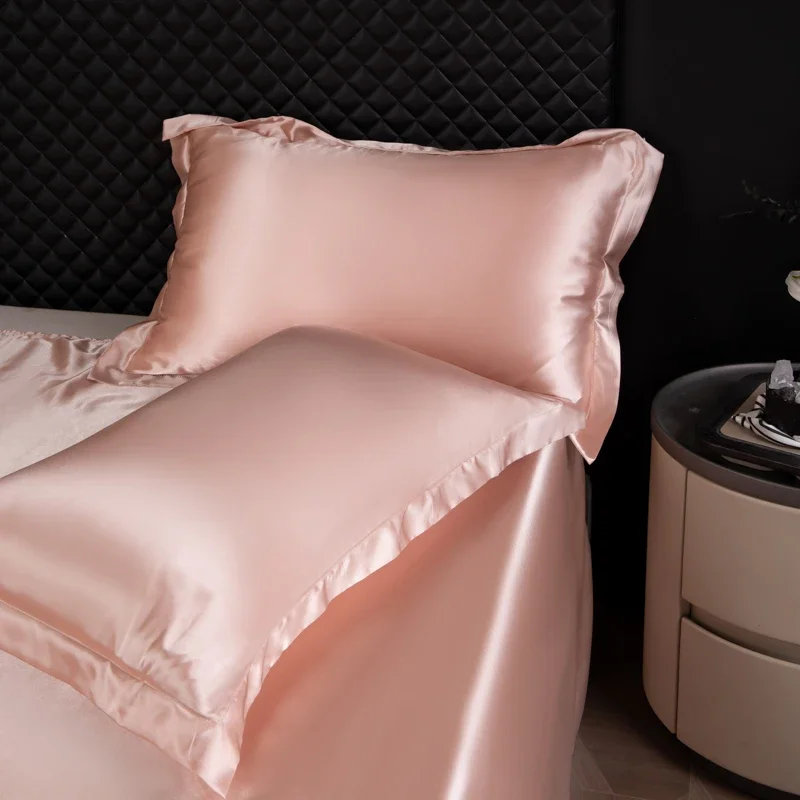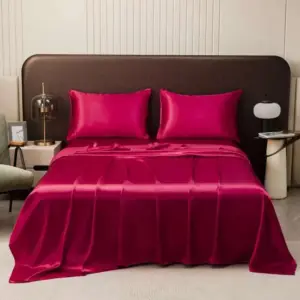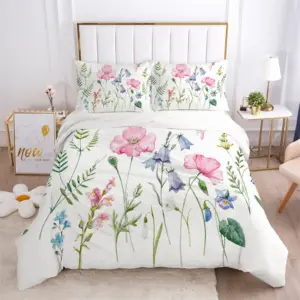Introduction: The Importance of Silk Momme Weight
For thousands of years, silk has been treasured as one of the most luxurious fabrics on earth. Its unique combination of softness, strength, and natural luster has made it a coveted material for everything from royal garments to modern bedding. Yet despite silk’s long history, many consumers today remain confused about one critical aspect that determines its quality: momme weight.
When shopping for silk products, you’ve likely encountered this term, especially when looking at high-quality items. But what exactly is momme weight, and why does it matter so much when selecting silk products?
Simply put, momme weight is the standard unit used to measure the density and quality of silk fabric. Unlike other fabrics that might use thread count or general weight measurements, silk quality is uniquely measured in momme (pronounced “moh-mee”). Understanding this measurement is essential for making informed decisions when purchasing silk products.
Many consumers struggle to understand:
– What momme actually measures
– How it affects the quality and feel of silk
– Which momme weight is appropriate for different products
– Whether higher momme always means better quality
In this comprehensive guide, we’ll demystify silk momme weight, exploring its definition, measurement methods, significance, and practical applications. By the end, you’ll have the knowledge to confidently evaluate the quality of silk products and choose options that perfectly match your needs.
The unique properties of what makes mulberry silk special extend beyond just its luxurious feel—momme weight is a key factor in determining how these properties manifest in the final product. Whether you’re looking at mulberry silk sheets or other silk items, understanding momme weight will help you make better purchasing decisions.
What Is Momme Weight and Why Does It Matter?
Momme (pronounced “moh-mee”) is a traditional Japanese unit of weight specifically used to measure the density of silk fabrics. The term originated from the Japanese silk trade centuries ago and has become the global standard for evaluating silk quality.
Unlike cotton and other fabrics that rely on thread count, silk requires its own specialized measurement system because of its unique fiber structure. While thread count counts individual threads in a square inch of fabric, momme weight measures the actual density and weight of the silk.
Definition: One momme equals the weight in pounds of a piece of silk fabric measuring 45 inches by 100 yards.
This measurement is significant because it directly indicates how much silk material is used in creating the fabric. Higher momme weights mean more silk has been used per square inch, resulting in a denser, more substantial fabric.
Why does this matter for consumers? Momme weight directly affects nearly every quality aspect of silk:
- Durability: Higher momme silk generally lasts longer
- Texture: The weight influences how the silk feels against your skin
- Appearance: Momme affects the fabric’s drape, luster, and opacity
- Insulation: Denser silk provides better temperature regulation
- Value: Higher momme silk typically costs more due to increased raw material usage
The difference between various momme weights is immediately noticeable. For example, a 19 momme silk pillowcase will feel noticeably lighter and more delicate than a 25 momme one, which will have more substance and body. This isn’t just a matter of preference—these differences affect how the product performs over time and in different applications.
For those new to silk, understanding momme weight is an essential first step in evaluating the complete guide to mulberry silk bed sheets and making informed decisions when shopping for products like mulberry silk pillowcases.
How Silk Momme Weight Is Measured
To truly understand silk quality, it helps to know exactly how momme weight is calculated. The traditional definition—the weight in pounds of a piece of silk fabric measuring 45 inches by 100 yards—can be difficult to visualize. Let’s break it down into more practical terms.
In modern measurements, there’s a direct conversion between momme and grams per square meter (GSM):
1 momme = 4.340 grams per square meter (g/m²)
This means a 19 momme silk weighs approximately 82.5 g/m² (0.27 oz/ft²), while a 25 momme silk weighs around 108.5 g/m² (0.35 oz/ft²). This difference might seem small numerically, but it represents about 30% more silk material, which significantly impacts the fabric’s performance and feel.
Silk manufacturers determine momme weight using precision scales under controlled conditions. The process involves:
- Cutting a precisely measured sample of the silk fabric
- Weighing it under specific temperature and humidity conditions
- Calculating the weight per unit area
- Converting to the momme scale
For consumers, understanding this measurement provides insight into what you’re actually paying for when you purchase higher momme silk products. The increased price directly correlates to the additional silk material used in production.
This measurement method differs significantly from how other fabrics are evaluated. Cotton sheets, for example, might be measured by thread count or general weight (like 200 GSM), but these measurements don’t translate well to silk’s continuous filament structure.
When considering why choose mulberry silk sheets, the momme weight is one of the most important factors that determines their quality, feel, and longevity—making it essential knowledge for smart purchasing decisions.
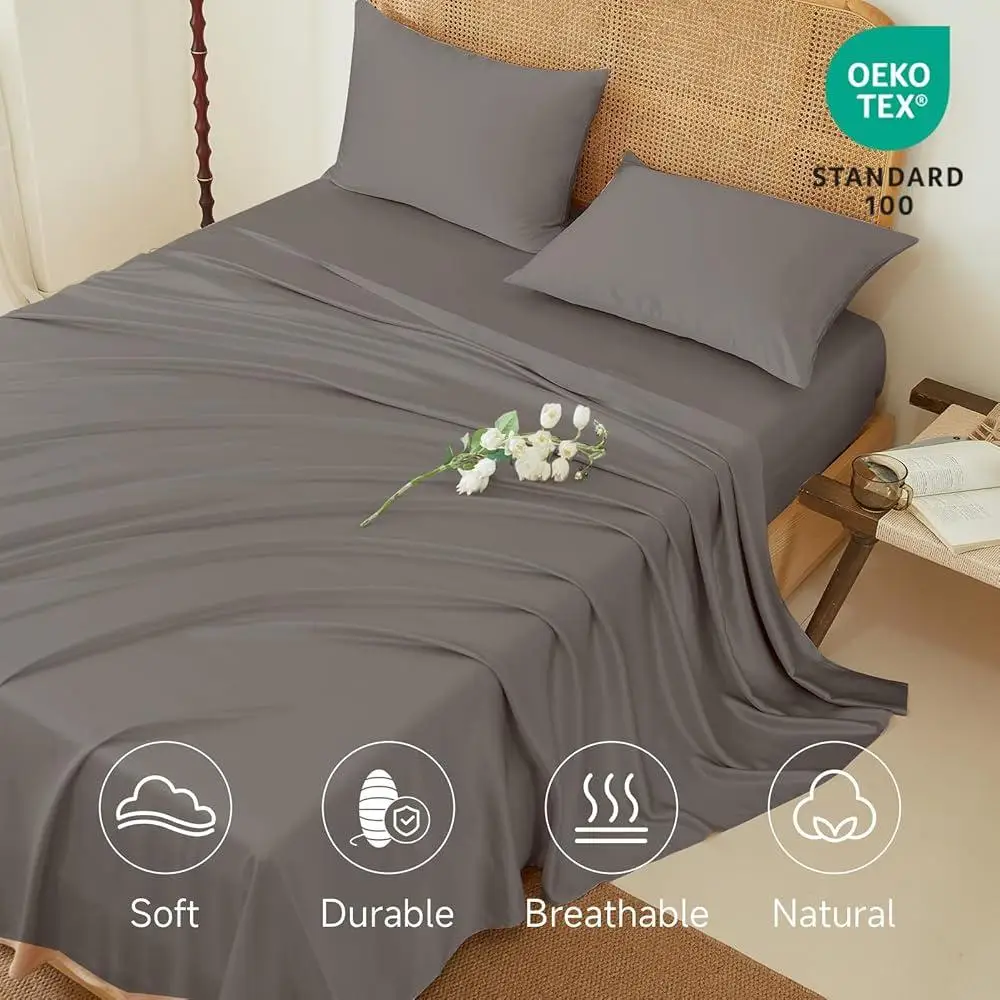
Momme vs. Thread Count: Understanding the Difference
One of the most common misconceptions when shopping for silk products is attempting to evaluate them using thread count, the familiar standard for cotton sheets. This confusion leads many consumers to make poor purchasing decisions, as the two measurements reflect fundamentally different quality aspects.
Why Thread Count Doesn’t Work for Silk
Thread count, which counts the number of threads woven per square inch of fabric, is designed for fabrics made from spun yarns with individual, shorter fibers (like cotton). Silk, however, is composed of continuous filaments that can be up to 1,000 yards long. These natural filaments create fundamental structural differences:
| Aspect | Thread Count (Cotton) | Momme Weight (Silk) |
|---|---|---|
| What it measures | Number of threads per square inch | Weight of fabric per standard area |
| Fiber structure | Short, spun fibers | Long, continuous filaments |
| Quality indication | Higher count can indicate finer threads | Higher weight indicates more silk material |
| Manipulation potential | Can be artificially inflated by counting plies | Difficult to manipulate as it’s a direct weight measurement |
| Primary quality indicator | One of several important factors | The primary measure of silk density |
When a retailer advertises silk using thread count, it often indicates either a lack of understanding of silk quality or an attempt to use familiar terminology at the expense of accuracy. Thread count simply doesn’t capture what makes silk fabric good or bad.
For example, a “600 thread count” silk sheet might actually be lower quality than a 19 momme silk sheet that doesn’t mention thread count at all. The thread count figure doesn’t provide meaningful information about silk’s density, durability, or quality.
Silk’s continuous filament structure creates a smooth surface that contributes to its characteristic feel and appearance. These long fibers also explain why silk is naturally hypoallergenic and less likely to trap dust and allergens compared to fabrics with more spaces between shorter fibers.
Understanding the fundamental silk vs. cotton comparison helps explain why these different measurements evolved. When shopping for 100% silk sheets, always look for the momme weight rather than thread count to accurately assess quality.
The Quality Indicators of Momme Weight
Momme weight affects virtually every aspect of silk’s performance and feel. Understanding these connections helps explain why higher momme silk generally commands higher prices and is preferred for certain applications. Let’s examine the specific qualities influenced by momme weight:
Durability and Longevity
Higher momme silk contains more silk protein fibers per square inch, creating a stronger, more resilient fabric that:
– Resists tearing and fraying
– Maintains its structure after repeated washing
– Shows less wear over time
– Stands up better to regular use
For example, a 19 momme silk pillowcase might last 1-2 years with regular use, while a 25 momme version could extend to 3-5 years or more with proper care.
Softness and Texture
While all silk is naturally soft, momme weight affects the specific tactile experience:
– Lower momme silk (12-16) feels ethereally light and breathable
– Medium momme silk (16-22) balances softness with substance
– Higher momme silk (22-30) offers a more substantial, luxurious hand-feel with greater weight
The density also impacts how the silk interacts with your skin. Higher momme silk creates more consistent contact with your skin’s surface, enhancing the famous “silk feel.”
Luster and Visual Appeal
Silk’s natural shine is affected by momme weight:
– Higher momme silk typically displays more consistent luster
– The increased density provides more light-reflecting surfaces
– Heavier silk often has a deeper, richer appearance
– The drape (how fabric hangs) becomes more pronounced and fluid with higher momme weights
Opacity and Transparency
The amount of light that passes through silk directly correlates with its momme weight:
– 8-12 momme: Semi-transparent, suitable for sheer garments
– 16-19 momme: Translucent in direct light
– 22-30 momme: Increasingly opaque, providing privacy and substantiality
Temperature Regulation
Silk’s natural temperature-regulating properties strengthen with higher momme weights:
– More silk fibers create better insulation in cold weather
– The protein structure helps dissipate excess heat in warm conditions
– Higher density silk provides more consistent temperature control throughout the night
Understanding how momme weight affects these qualities helps explain why certain weights are recommended for specific products. The benefits of transform sleep quality complete guide highlight how the right momme weight can enhance your sleep experience, especially with luxury silk bedding sets designed for optimal comfort.
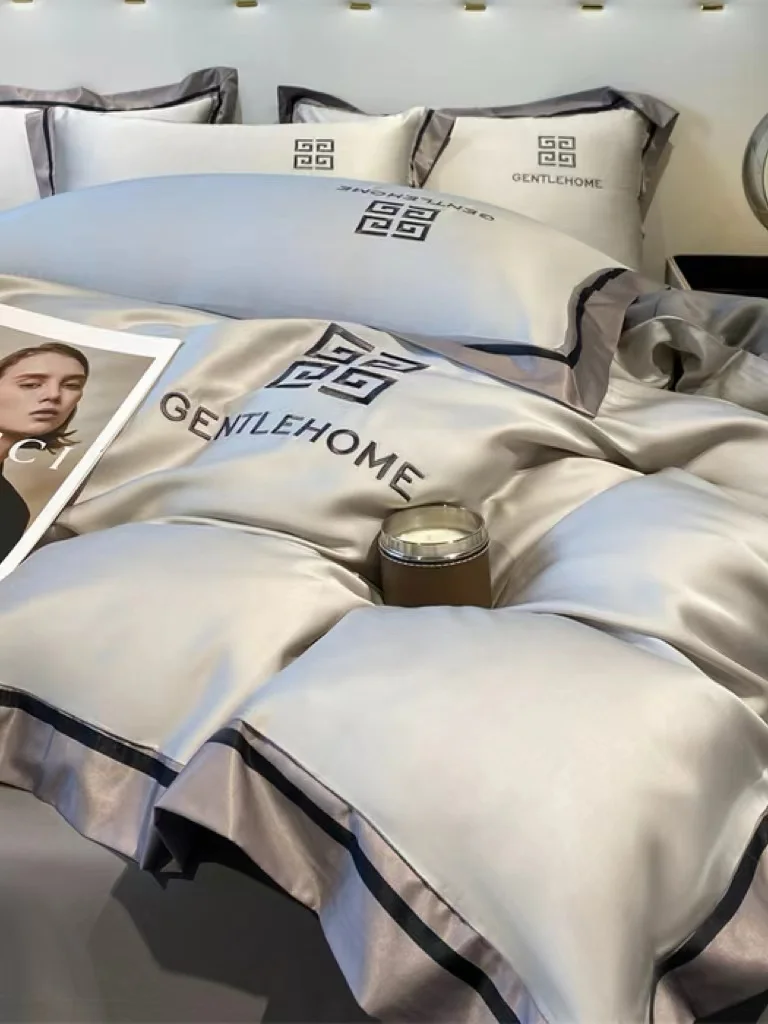
Ideal Momme Weights for Different Silk Products
Not all silk products require the same momme weight to perform at their best. Different applications have different requirements for durability, drape, opacity, and feel. Here’s a comprehensive breakdown of ideal momme weights by product category:
Lightweight Silk (8-16 momme)
This weight range offers exceptional airiness, making it ideal for items where lightness and breathability are priorities. Best for:
– Lightweight summer scarves
– Sheer curtains
– Delicate lingerie
– Summer blouses
– Decorative accents
Medium Weight Silk (16-22 momme)
This versatile range balances durability with graceful drape, making it the most widely used weight for everyday silk items:
– Sleepwear and pajamas
– Dresses and blouses
– Hair accessories
– Basic pillowcases
– Everyday scarves
Heavyweight Silk (22-30+ momme)
Premium weight that offers maximum durability and luxury for items that need to withstand regular use:
– Bedding (sheets, duvet covers)
– Premium pillowcases
– Winter scarves
– Upholstery and home décor
– Investment garments
Specific Product Recommendations
| Product Category | Recommended Momme Range | Optimal Range | Notes |
|---|---|---|---|
| Silk Pillowcases | 19-30 momme | 22-25 momme | Higher momme recommended for daily use |
| Silk Sheets | 19-30 momme | 22-25 momme | 19 momme for warmer climates, 25+ for cooler regions |
| Silk Duvet Covers | 22-30 momme | 25-30 momme | Higher weights provide better durability |
| Sleepwear/Pajamas | 16-22 momme | 19 momme | Balances comfort with appropriate opacity |
| Dresses/Blouses | 12-19 momme | 16 momme | Allows for beautiful drape while maintaining structure |
| Scarves/Accessories | 8-16 momme | 12 momme | Lighter weights enhance graceful movement |
| Hair Accessories | 19-22 momme | 19 momme | Provides structure while remaining gentle on hair |
The benefits of different momme weights can be especially important when considering mulberry silk bedding skin benefits. For bedding that comes in regular contact with your skin, the right momme weight ensures both comfort and longevity.
Our collection of silk sheets and silk pillowcases offers various momme weight options to suit different preferences and needs.

Is Higher Momme Always Better? Nuances Explained
While higher momme generally indicates better quality silk, this doesn’t always mean it’s the best choice for every situation. Understanding the nuances helps you make more informed decisions based on your specific needs.
When Higher Momme Excels
Higher momme silk (22-30) is typically superior for:
– Products that need durability and longevity
– Items used daily (like bedding)
– Situations where opacity is important
– Cooler climates where insulation is valued
– Investment pieces meant to last many years
When Medium or Lower Momme May Be Preferable
Sometimes, lighter silk offers advantages:
– Drape and Movement: For scarves and flowing garments, 12-16 momme creates more graceful movement and less weight
– Comfort in Hot Weather: Lighter-weight silk (16-19 momme) allows better air circulation in warm climates
– Cost Effectiveness: For seasonal items or pieces that won’t see daily use, lower momme options offer good value
– Specific Applications: Some products, like certain garments, traditionally use lighter silk for aesthetic reasons
The Diminishing Returns Factor
There’s also a point of diminishing returns with momme weight. While the jump from 16 to 19 momme or 19 to 22 momme typically brings noticeable quality improvements, the difference between 25 and 30 momme might be less dramatic relative to the price increase.
For example, when considering pillowcases:
– A 16 momme pillowcase might feel too light and wear out quickly with regular use
– A 19 momme offers good quality at a reasonable price point
– A 22 momme provides excellent durability with a luxurious feel
– A 30 momme offers ultimate luxury but at a significantly higher price
Your personal preferences also matter significantly. Some people prefer the substantial feel of higher momme silk, while others enjoy the ethereal lightness of lower momme options.
When deciding are mulberry silk sheets good for your specific situation, consider how you’ll use them, your local climate, and your tactile preferences. Our silk bedding sets come in various momme weights to accommodate different needs.
Beyond Momme: Other Critical Silk Quality Factors
While momme weight is a primary indicator of silk quality, it’s just one piece of the puzzle. Several other factors significantly impact the performance, feel, and longevity of silk products:
Silk Grade and Type
The source and processing of silk fibers greatly affect quality:
- Mulberry Silk: The highest quality, produced by silkworms fed exclusively on mulberry leaves. Grades range from A to 6A (highest), with 6A indicating the longest, strongest fibers with consistent color and minimal imperfections.
- Wild Silk (Tussah, Eri, etc.): Stronger but typically less soft than mulberry silk, with a more textured appearance.
- Peace Silk/Ahimsa Silk: Harvested after the moth emerges naturally, resulting in shorter fibers but cruelty-free production.
Weave Type
Different silk weaves create dramatically different fabrics:
- Charmeuse: The classic silk weave with a shiny front and matte back, offering the quintessential silk drape and luster. Most common for bedding.
- Habotai: Lightweight plain weave with a soft finish, often used for scarves and linings.
- Dupioni: Characterized by slight irregularities and a crisp texture, popular in home décor and formal wear.
- Crepe de Chine: Matte finish with a slightly textured surface, providing elegant drape with less shine.
Production and Processing
How silk is processed significantly affects its quality:
- Dyeing Methods: Natural dyes vs. chemical processing impacts both appearance and how the silk feels against skin.
- Finishing Treatments: Some manufacturers use softeners or artificial weights that wash out over time.
- Single-Strand vs. Multiple-Strand: Higher quality silk uses longer, unbroken filaments.
Certifications and Standards
Look for these indicators of quality and safety:
- Oeko-Tex Standard 100: Certifies the fabric is free from harmful substances.
- BSCI (Business Social Compliance Initiative): Ensures ethical production standards.
- GOTS (Global Organic Textile Standard): For organically produced silk.
The interaction between these factors and momme weight determines the overall quality of a silk product. For example, a 19 momme 6A grade mulberry silk charmeuse sheet will feel much more luxurious than a 22 momme lower-grade silk in a rougher weave.
For those with mulberry silk sheets sensitive skin concerns, these additional quality factors are particularly important to consider alongside momme weight. The choosing right silk weave can be just as important as choosing the right weight for your specific needs.
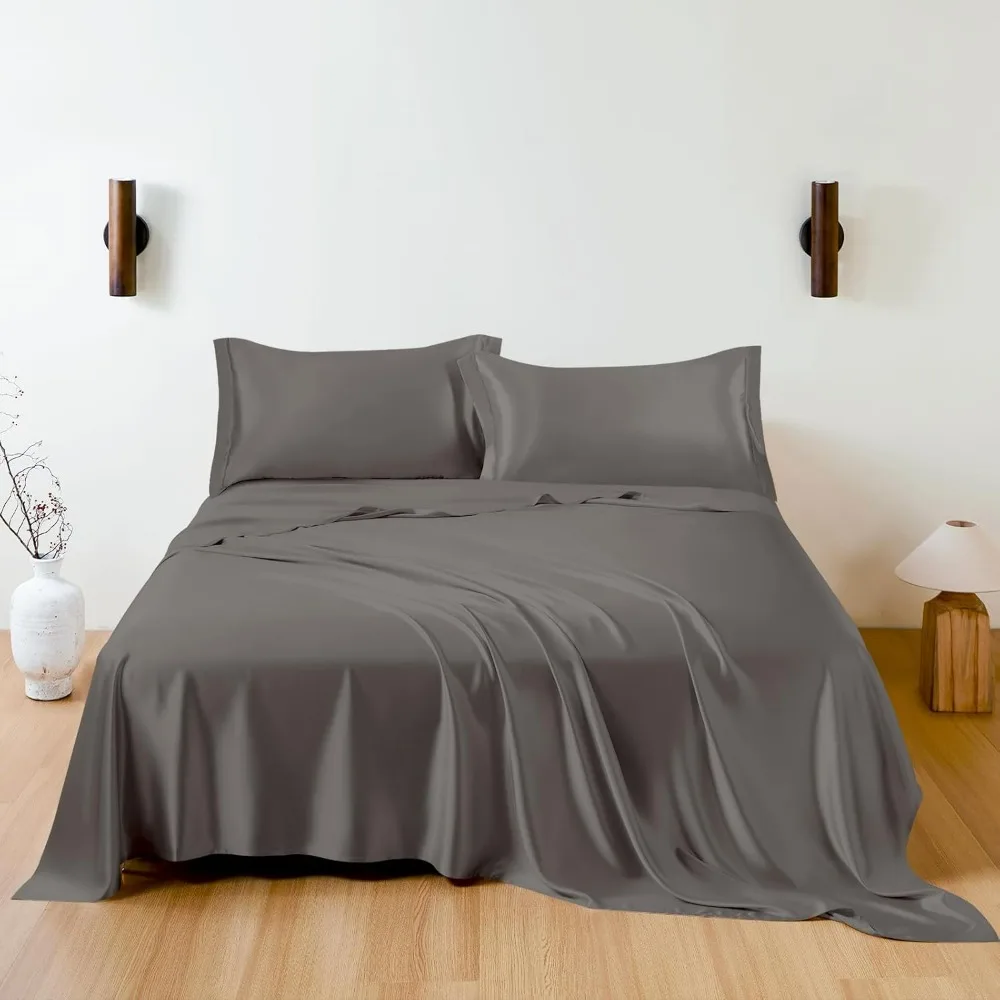
How to Verify Silk Quality When Shopping
Armed with knowledge about momme weight and other quality factors, you can shop for silk with confidence. Here’s how to evaluate silk products effectively:
Identifying True Momme Weight
When shopping for silk products, be aware that not all retailers accurately represent momme weight:
- Check Product Specifications: Look for explicit momme weight listed in product details
- Beware of Vague Terminology: Terms like “heavy silk” or “lightweight silk” without specific momme numbers may indicate the seller doesn’t know or isn’t being transparent
- Price as Indicator: Extremely low prices for supposedly high momme silk should raise red flags
- Request Clarification: Don’t hesitate to ask retailers directly about the momme weight if it’s not clearly stated
Red Flags When Shopping for Silk
Watch for these warning signs of potentially misrepresented silk:
– Missing or vague momme weight specifications
– Thread count being emphasized over momme weight
– Prices too good to be true for the stated quality
– Excessive shine that appears artificial rather than natural silk luster
– Inconsistent weight or feel when handling the product
Simple Tests for Authentic Silk
If you already have the product in hand:
- Touch Test: Real silk feels cool to the touch initially but warms quickly
- Ring Test: High-quality silk can be pulled through a ring due to its fine, strong fibers
- Burn Test (for samples): Genuine silk burns slowly with a smell similar to burning hair and creates ash that can be crushed between fingers
Questions to Ask Retailers
When shopping for premium silk products, don’t hesitate to inquire about:
– Specific momme weight
– Silk grade (4A, 6A, etc.)
– Type of weave used
– Certification standards met
– Country of origin for the raw silk (not required)
– Dyeing and finishing processes
Price Expectations
Understanding typical price ranges helps identify suspiciously cheap “silk”:
– 16-19 momme silk pillowcases: $30-80
– 19-22 momme silk sheets (Queen): $250-500
– 22-25 momme silk sheets (Queen): $350-700
– 25-30 momme silk sheets (Queen): $450-1000+
These price ranges vary by brand, additional quality factors, and current market conditions.
Knowing the advantages sleeping mulberry silk provides makes it easier to justify investing in authentic, high-quality silk products. Our mulberry silk bedding sets are clearly labeled with momme weight and other quality specifications to help you make informed decisions.
Full-size Silk Sheets, King Size Silk Sheets, Queen Size Silk Sheets, Twin Size Silk Sheets, Washable Silk Sheets
Price range: $95.95 through $178.37 Select options This product has multiple variants. The options may be chosen on the product page100% Silk Sheets, Green Silk Sheets, King Size Silk Bedding Set, Mulberry Silk Bedding Sets, Queen Size Silk Bedding Set
Price range: $1,246.21 through $1,615.22 Select options This product has multiple variants. The options may be chosen on the product pagePink Silk Sheets, Twin Size Silk Sheets
$171.80 Select options This product has multiple variants. The options may be chosen on the product pageFull-size Silk Sheets, Pink Silk Sheets
$136.31 Select options This product has multiple variants. The options may be chosen on the product pageFull Silk Bedding Set, King Size Silk Bedding Set
Price range: $120.99 through $190.49 Select options This product has multiple variants. The options may be chosen on the product pageGrey Silk Sheets, Silk Sheet and Pillowcase Set
Price range: $88.20 through $146.64 Select options This product has multiple variants. The options may be chosen on the product page
Caring for Different Momme Weight Silk Products
Proper care is essential for maintaining silk’s beauty and extending its lifespan. Interestingly, different momme weights may require slightly different care approaches to preserve their unique qualities.
General Care Guidelines for All Silk
Regardless of momme weight, all silk benefits from these basic care principles:
– Hand wash in cold water with pH-neutral soap whenever possible
– Avoid direct sunlight for extended periods
– Keep away from harsh chemicals, including perfumes and deodorants
– Store in a cool, dry place, ideally in breathable cotton bags
– Avoid hanging silk items for long periods, as this can stretch the fibers
Care Tips by Momme Weight
Lightweight Silk (8-16 momme)
– Requires the gentlest handling
– Hand washing strongly recommended
– Lay flat to dry completely before handling
– More susceptible to water stains and stretching
– Best stored folded with minimal layers
Medium Weight Silk (16-22 momme)
– Can tolerate gentle machine washing on silk/delicate cycle in mesh bags
– May be ironed on low heat with a pressing cloth
– Dry cleaning is suitable for structured garments
– Recovers better from minor wrinkles
Heavyweight Silk (22-30 momme)
– Most durable and forgiving of silk weights
– Can usually withstand gentle machine washing with silk-specific detergent
– Holds shape better during washing
– May require more thorough rinsing to remove soap residue
– Takes longer to dry completely
Longevity Expectations
With proper care, you can expect:
– Lightweight silk items (8-16 momme): 1-2 years of regular use
– Medium weight silk (16-22 momme): 2-5 years of regular use
– Heavyweight silk (22-30 momme): 5-10+ years of regular use
These estimates vary significantly depending on frequency of use and care practices.
Special Considerations
For All Silk Weights:
– Rotating items (especially bedding) extends their life significantly
– Immediate attention to stains is crucial regardless of momme weight
– Even heavyweight silk remains more delicate than most synthetic fabrics
The exceptional benefits mulberry silk sheets provide are best preserved through proper care. For those seeking easier maintenance, our washable silk sheets offer special finishing treatments that make them more resilient while maintaining silk’s natural benefits.
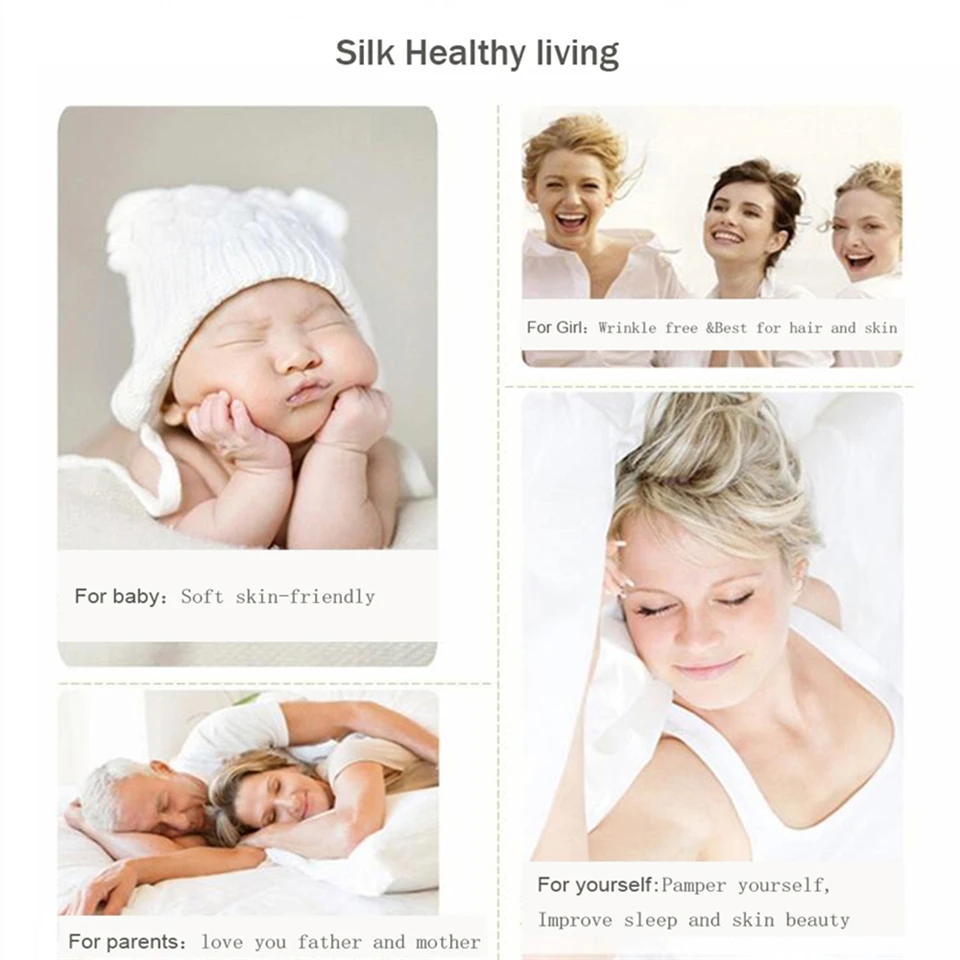
Common Questions About Silk Momme Weight
Is 30 momme silk always better than 19 momme?
Not necessarily. While 30 momme silk is certainly more substantial and typically more durable than 19 momme, “better” depends on your specific needs. For bedding in cooler climates or for maximum longevity, 30 momme excels. However, 19 momme might be preferable for summer bedding or in warm climates due to its lighter weight and greater breathability. Think of it like choosing between a heavy winter coat and a light spring jacket—each is “better” in the right context.
What is the minimum momme weight I should consider for quality silk sheets?
For silk sheets that will provide both a luxurious experience and reasonable durability, 19 momme is generally considered the minimum threshold for quality. Below 19 momme, sheets tend to be too lightweight for regular use and may wear out quickly. Most experts recommend 22-25 momme as the sweet spot for silk sheets, balancing durability with comfort and value.
How does 22 momme silk compare to 25 momme for pillowcases?
The difference between 22 and 25 momme pillowcases is noticeable but subtle. A 22 momme pillowcase offers excellent quality with a slightly lighter feel, while 25 momme provides additional durability and a more substantial hand-feel. Since pillowcases see direct contact with face oils, hair products, and frequent washing, the extra durability of 25 momme can translate to a longer lifespan—potentially 1-2 years longer with proper care. The price difference is usually 15-25%.
Can I feel the difference between 19 and 25 momme silk?
Yes, most people can easily feel the difference between these two weights. A 19 momme silk feels noticeably lighter and more fluid, while 25 momme has a more substantial weight and body to it. The 25 momme will typically feel more luxurious to the touch and drape differently when laid across a bed or other surface. The difference is comparable to the feeling between a light summer blouse and a more substantial silk dress.
Does momme weight affect how cool silk feels against the skin?
Yes, but in nuanced ways. Lower momme silk (16-19) can feel slightly cooler initially because there’s physically less material to retain heat. However, higher momme silk (22-30) often provides better overall temperature regulation throughout the night because the additional silk protein provides both better insulation in cold conditions and better moisture-wicking properties when you’re warm. For most sleepers, the temperature regulation benefits of 22-25 momme silk outweigh the initial coolness of lighter weights.
For comprehensive information about all aspects of silk bedding, our ultimate guide silk bedding addresses these questions and many more to help you make the most informed decision possible.

